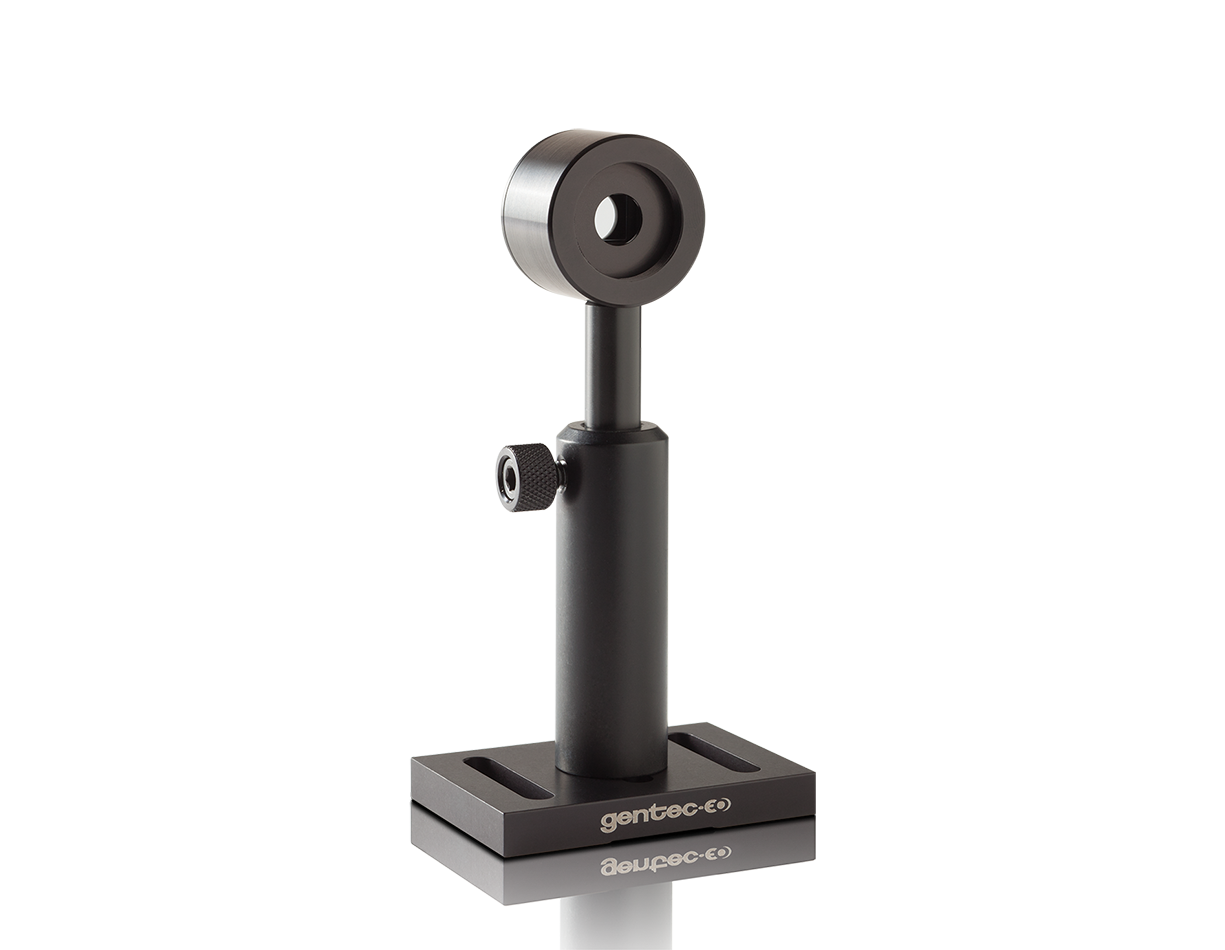Laser power detectors
Calibrated laser power detectors
We offer a wide range of laser power detectors that allows you to get a high-precision power measurement.
The right power detector for you highly depends on your laser specifications and your measurement needs. Keep reading below to learn more about our state-of-the-art technologies.

Thermopile power detectors
A thermopile is simply an array of thermocouples connected in series and close together. The most common application is when a voltage is applied to cool one side of the thermopile and whatever it is bonded to.
Thermopiles for laser power measurement, however, are used in the opposite fashion. That is, a temperature difference is used to create a voltage. On one side, the material heated by a laser (or any other radiation source), and on the other side is a heatsink. The laser's energy that is absorbed by the material is converted to heat.
With the hot absorber on one surface and the cold heatsink on the other, there is a temperature difference across the thermo-electric device as the heat flows through it. This temperature difference causes the thermopile to generate a voltage. That voltage is proportional to the temperature difference, which in turn is proportional to the laser power.
At Gentec-EO, we carefully design and build the thermopiles for our laser power detectors to make sure that we offer the best performance for your application.
Our products in the UP series are based on the thermopile technology.

Photodiode power detectors
Photodiodes are devices made of semiconductor materials that convert light into an electrical current. Since the current is generated by the electron-hole pairs in the p-n junction of the semiconductor, the responsivity of this device depends on the bandgap of the material and varies greatly with wavelength.
The highly wavelength-dependent spectral response of photodiodes can be both an advantage and a drawback. The spectral response of these detectors act as a natural filter to block out noise from other sources, but it also means that different detectors must be used to measure different light sources.
Compared to thermopiles, photodiodes are faster, are less affected by temperature fluctuations and have lower noise levels. On the other hand, their high sensitivity makes them susceptible to noise coming from ambient light.
Our products in the PH series use the photodiode technology.

Pyroelectric power detectors
Pyroelectric sensors act as a source of electrical current when subjected to changes in temperature. With light-absorbing material on the front of the pyroelectric device and a heatsink in the back, variations in temperature, such as those created by an incoming pulse of light, can be converted into an energy or power measurement.
To measure power with a pyroelectric sensor, the signal must be chopped at a specific frequency so that the instrument can convert the variations that it detects into a power reading.
The Gentec-EO pyroelectric power detectors offer the low noise levels of photodetectors but with the large bandwidth of pyroelectric sensors.
Our design includes an isolation tube to eliminate power fluctuations caused by air turbulence, and we recommend using our Delrin posts to eliminate noise from vibrations.

Integrating sphere power detectors
An integrating sphere detector is composed of two elements. First, light enters a hollow sphere through a small aperture and it diffuses inside the sphere with multiple reflections on the sphere's inner coating. Second, a small uniformly-lit aperture at another position in the sphere samples a portion of this diffused light and sends it onto a sensor.
Basically, integrating spheres act as attenuators to allow for the use of smaller and faster detectors. Integrating sphere power detectors offer many advantages: fast response, high sensitivity, excellent spatial uniformity.
We currently offer two models of integrating sphere power detectors but, as with all our other product lines, we are always ready to work with you on the design of a custom product that will perfectly suit your measurement needs.

Water calorimeters for high power
For high and very high power applications, we designed a new technology based on water calorimetry.
In high power detectors such as our HP series, after the laser optical power hits the absorber of the detector, the heat absorbed by the thermal mass is transferred to the cooling water in the cooling circuit. Instead of analyzing the electrical output of a thermopile disk, our high power detectors measure both the flowrate and the temperature change of the cooling water.
Both measured flowrate and water temperature difference are used to determine the optical input laser power.
Some of the biggest advantages of calorimetric detectors are robustness and high cooling efficiency. These detectors also measure cooling water parameters and thus offer a safer operation.
Let us recommend a compatible power detector
Our product finder tool will ask you 3 simple questions about your laser and will immediately tell you which laser power detectors are the best for you.

